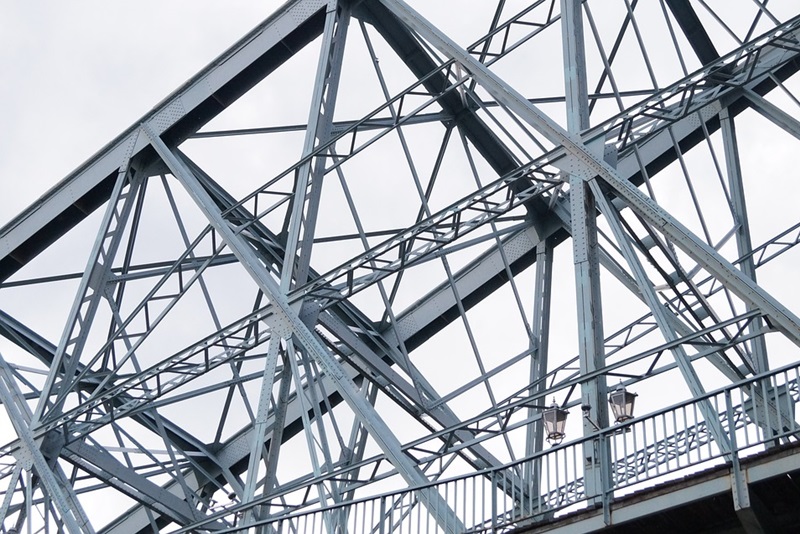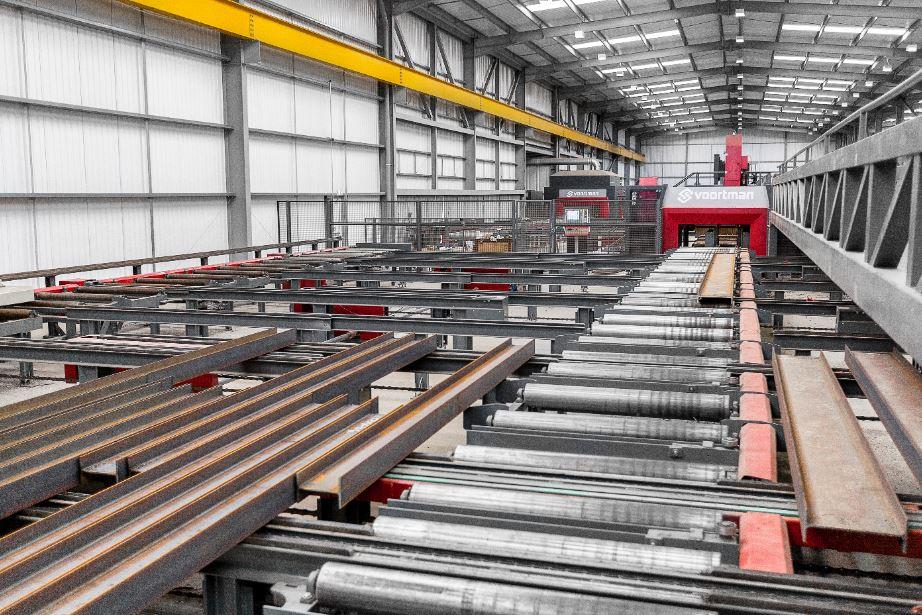Advanced Steel Fabrication Melbourne: Building the Future Today
Advanced Steel Fabrication Melbourne: Building the Future Today
Blog Article
Comprehensive Analysis of Cutting-Edge Techniques in Steel Fabrication Sector
As the steel construction industry proceeds to develop, the integration of sophisticated methods has ended up being vital for remaining competitive and meeting the needs of contemporary manufacturing requirements. From laser cutting improvements to the usage of robotics and 3D printing in steel production, the landscape of fabrication strategies is rapidly transforming. With each development bringing its very own set of difficulties and advantages, an extensive evaluation of these techniques is vital for companies aiming to simplify their processes, improve accuracy, and ultimately, raise the top quality of their steel fabrication outcome. In this vibrant industry where innovation plays a crucial role, comprehending the subtleties of these cutting-edge techniques is not simply an alternative but a requirement for those seeking to build ahead in the ever-evolving world of steel construction.
Laser Cutting Advancements
In the realm of steel fabrication, laser reducing innovations have actually changed the accuracy and performance of steel shaping processes. By utilizing the power of concentrated laser beams, manufacturers can now attain unmatched degrees of precision when puncturing various kinds of steels. This innovation allows elaborate styles to be executed with marginal product wastage, making it a cost-efficient solution for markets calling for high precision components.
Among the vital advantages of laser cutting is its ability to handle a vast array of materials, consisting of stainless-steel, aluminum, and carbon steel, easily. The procedure creates clean, burr-free sides, eliminating the demand for added finishing actions. The non-contact nature of laser reducing decreases the threat of material contamination, resulting in greater high quality end items.
Additionally, laser cutting makers can be programmed to make swift, specific cuts, considerably lowering production time contrasted to conventional reducing methods. This rate and precision make laser cutting specifically suitable for automation environments where effectiveness is paramount. As innovation proceeds to advance, laser cutting is positioned to play a significantly important duty in the steel fabrication market.

CNC Machining Innovations
The development of CNC machining modern technologies has actually ushered in a new age of accuracy and performance in the steel fabrication market. Computer System Numerical Control (CNC) equipments have transformed steel construction by using unmatched accuracy and repeatability in the manufacturing process. steel fabrication melbourne. Among the vital technologies in CNC machining is the integration of advanced software systems that enable real-time tracking and modifications, leading to improved efficiency and quality assurance
Moreover, the advancement of multi-axis CNC makers has enabled the construction of complex steel components with intricate designs that were formerly testing to create. These makers can carry out a large range of machining operations, consisting of milling, boring, turning, and grinding, all with high levels of accuracy.
In addition, the unification of automation and robotics in CNC machining has streamlined production procedures, lowered lead times, and reduced the margin of error. This assimilation of innovative innovations not only enhances effectiveness but additionally makes certain constant quality throughout all produced steel parts. In verdict, CNC machining advancements continue to drive developments in the steel manufacture sector, establishing brand-new criteria for precision and productivity.
Automated Welding Technologies
Automated welding technologies have actually transformed the steel fabrication sector, enhancing efficiency and accuracy in the welding process. These advanced modern technologies utilize computer-controlled systems to automate the welding process, bring about higher productivity levels and check my reference improved weld high quality. One of the vital benefits of automated welding is the capability to perform complex welds with constant precision, decreasing the possibility of errors and rework.
Robot welding systems go to the center of automated welding innovations, providing exceptional speed and precision. These systems can manage a variety of welding jobs, from easy to elaborate, with convenience (steel fixing). By using innovative sensing units and software, robotic welders can adjust to variants in material and joint geometry, making sure an uniform and trusted weld
Moreover, automated welding technologies boost workplace safety by decreasing the direct exposure of human welders to unsafe fumes and extreme heat. As the steel construction market remains to evolve, incorporating automated welding innovations will be vital for companies wanting to stay competitive and fulfill the expanding demands for top notch bonded items.
Robotics Combination in Manufacture
Using robotic systems in construction processes has actually become a pivotal approach for enhancing effectiveness and accuracy in modern-day production settings. Robotics assimilation in steel manufacture provides a myriad of advantages, consisting of increased efficiency, enhanced quality assurance, and boosted safety measures. These innovative robotic systems are equipped with advanced sensors and shows capabilities, permitting them to carry out complex jobs with a high level of accuracy and repeatability.
Among the vital benefits of robotics combination in steel manufacture is the capacity to automate recurring tasks, such as material handling, reducing, welding, and assembly procedures. This not only speeds up production cycles yet additionally decreases the danger of human error, leading to higher overall item quality. Additionally, robots can run 24/7, substantially improving production output and meeting limited job due dates.

3D Printing in Steel Production
Having actually reinvented the steel construction industry via robotics assimilation, the blossoming exploration of 3D printing in steel production is positioned to more advancement the realm of modern-day manufacturing strategies. 3D printing, also recognized as additive production, supplies unmatched design freedom and complexity, enabling the creation of intricate steel frameworks that were previously unattainable with traditional manufacturing approaches. By utilizing computer-aided layout (CAD) software application, suppliers can precisely manage the layer-by-layer deposition of steel product, resulting in get rid of boosted functionalities and geometries.
Among the essential benefits of 3D printing in steel production is its capability to lower material waste considerably. Unlike subtractive manufacturing processes where excess product is cut away, 3D printing only uses the essential amount of steel required for the final component. This effectiveness not just leads to set you back financial savings however likewise straightens with sustainable production methods by minimizing environmental effect.
In addition, 3D printing enables quick prototyping and personalization, permitting the manufacturing of small sets of complex steel elements with brief preparations. As the technology remains to develop and come to be extra available, its integration right into mainstream steel construction processes is anticipated to drive technology and efficiency across the industry.
Final Thought
In conclusion, the steel manufacture industry has actually seen considerable advancements in methods such as laser cutting, CNC machining, automated welding, robotics integration, and 3D printing. These cutting-edge modern technologies have reinvented the method steel items are manufactured, causing increased accuracy, cost-effectiveness, and performance. Proceeded financial investment in these cutting-edge strategies is critical for the sector to remain competitive and meet the needs of modern production processes.
As the steel construction industry proceeds to evolve, the assimilation of innovative techniques has actually come to be necessary for staying competitive and meeting the needs find this of modern-day production requirements.One of the crucial benefits of laser cutting is its capacity to manage a vast array of products, including stainless steel, light weight aluminum, and carbon steel, with simplicity.Automated welding modern technologies have actually reinvented the steel manufacture market, improving her latest blog effectiveness and precision in the welding procedure.Having actually reinvented the steel construction industry via robotics assimilation, the blossoming exploration of 3D printing in steel manufacturing is poised to more breakthrough the world of modern-day manufacturing strategies.In verdict, the steel manufacture market has actually seen considerable developments in strategies such as laser cutting, CNC machining, automated welding, robotics combination, and 3D printing.
Report this page